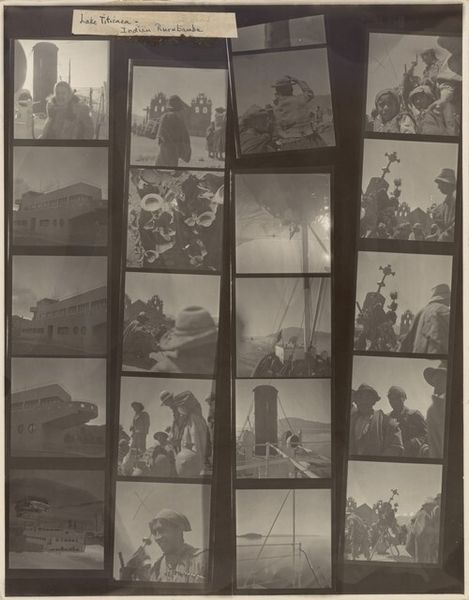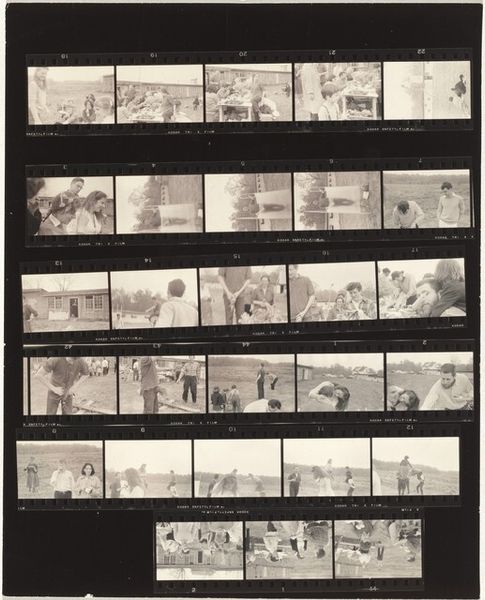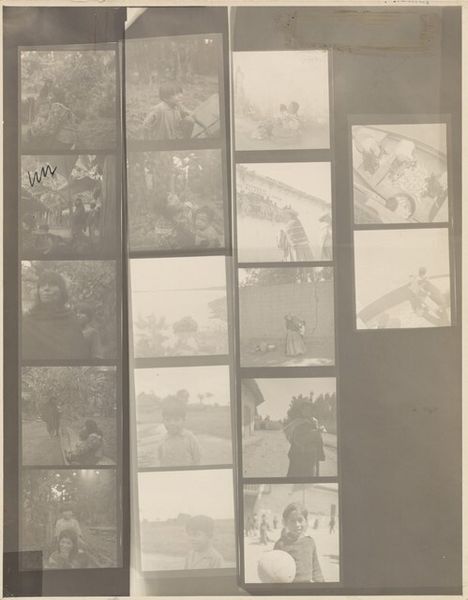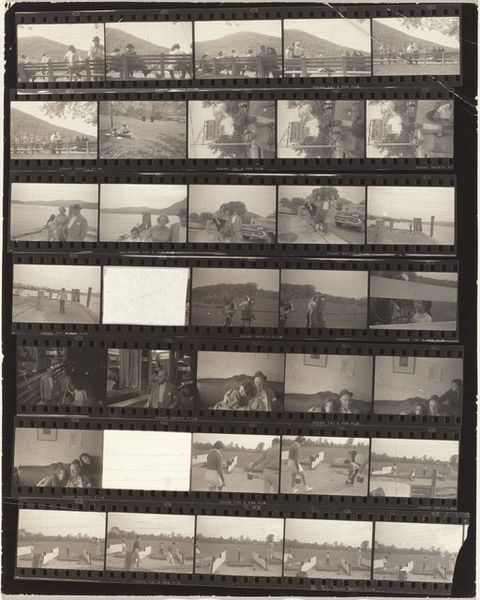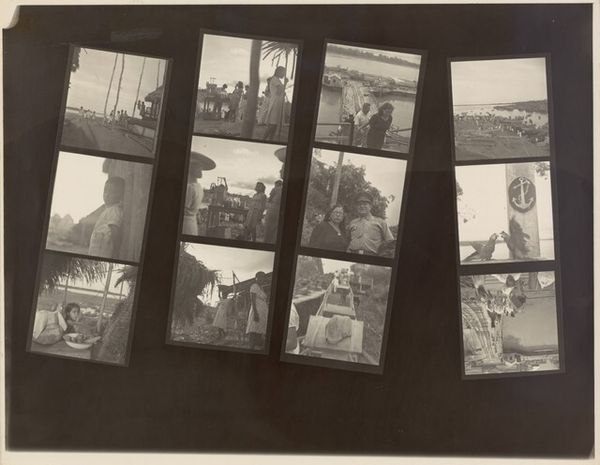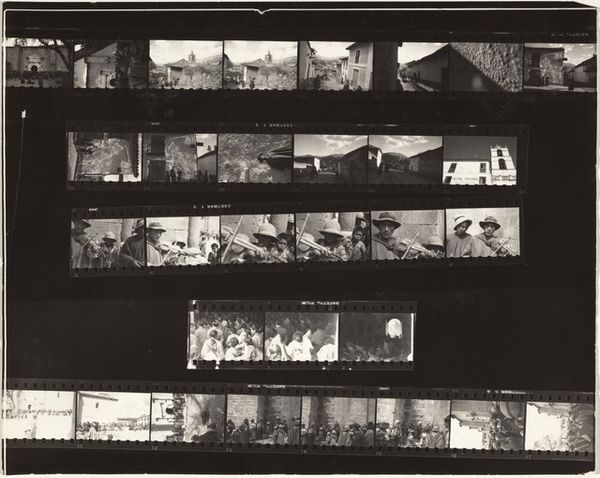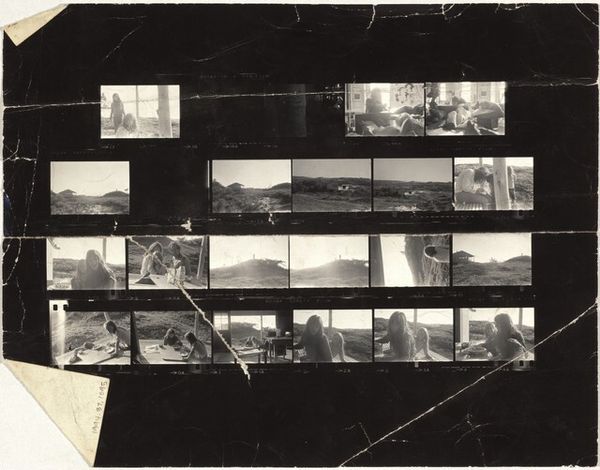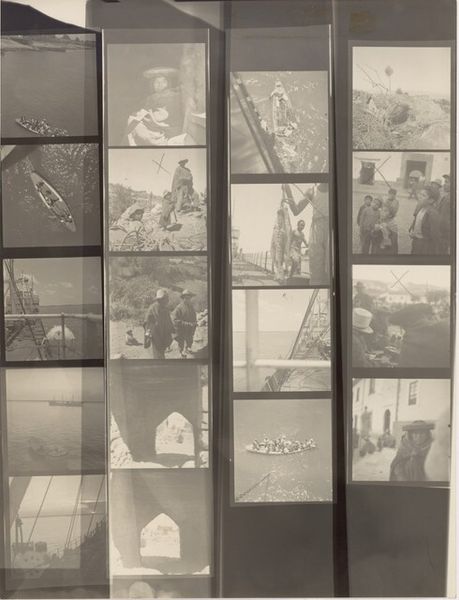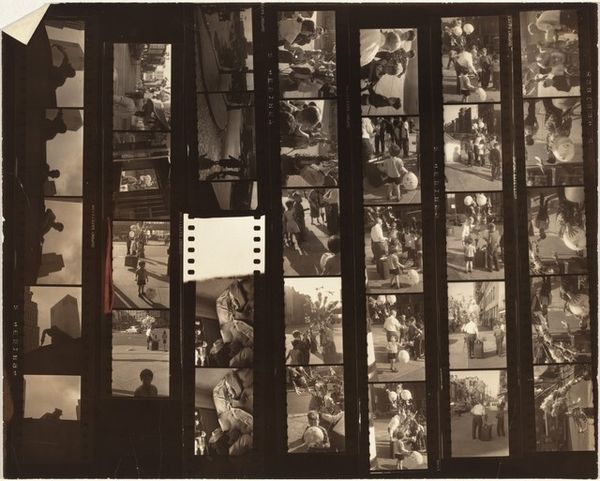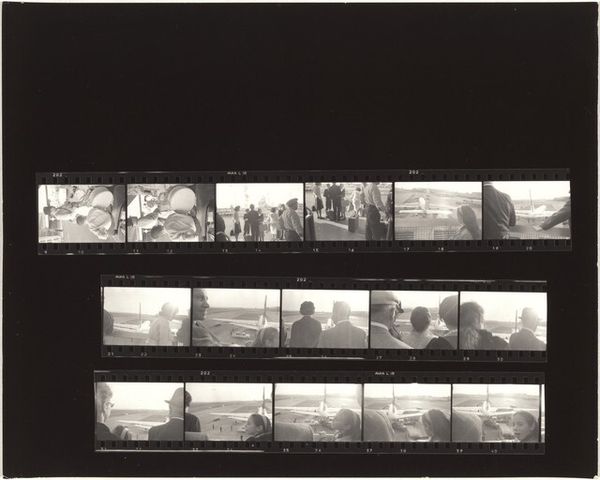
Dimensions: sheet: 34.6 x 26 cm (13 5/8 x 10 1/4 in.)
Copyright: National Gallery of Art: CC0 1.0
Editor: This is a contact sheet by Robert Frank, titled "Peru, no number," created in 1948 using a gelatin silver print. Looking at the arrangement of these various images, all seemingly captured in Peru, creates a mosaic effect, emphasizing texture. It seems as if he's inviting us into his creative process. What visual relationships do you observe within these images? Curator: It’s crucial to examine how Frank employs formal elements in each frame. Note the contrast—how light interacts with the forms. We see recurring geometries—lines formed by horizons, paths, or even the figures themselves. How do these recurring motifs create a visual rhythm across the entire sheet? Consider the tonal gradations; they construct depth and atmosphere within each mini-narrative. Editor: That's interesting. I noticed how the horizon lines differ; in some they're crisp, dividing earth from sky, while in others, they are blurred or absent, creating an almost dreamlike quality. Does that signify anything beyond pure composition? Curator: Let’s bracket the notion of ‘significance’ momentarily and refocus on pure observation. Observe how these shifting horizons affect spatial relations within the images. Do they compress space? Or expand it? How does Frank’s manipulation of focus shape our reading of each photograph, considered purely as form? Editor: I see what you mean. Focusing on those specific aspects clarifies how each image balances light and form, independently, yet the organization as a group creates its own compositional meaning. I see how he balances these. Curator: Precisely. Formal analysis provides a crucial lens for examining the artwork before contextual interpretations. Only after should we invite cultural context or personal narrative to colorize and shade in our assessment. Editor: I understand, by analyzing structure, form, light and shadow, one can observe and see the purpose more completely, and can better reflect on art more holistically. Curator: Precisely. It’s through understanding that basic foundation that richer, layered meaning reveals itself.
Comments
No comments
Be the first to comment and join the conversation on the ultimate creative platform.

